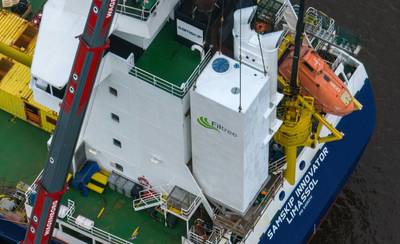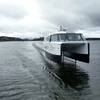Samskip Installs Onboard Carbon Capture and Utilization System
Samskip has installed an onboard carbon capture and utilization system on one of its shortsea vessels at Royathe l Niestern Sander shipyard.
The system in real-time captures 30%of the CO2 emissions generated by combustion engines and stores it in portable batteries. These batteries can then be delivered to businesses that utilize CO2 such as agricultural clients and greenhouses who currently use gas powered machinery to create CO2 needed to stimulate growth of their products. The captured CO2 can then immediately be used bypassing the need for the gas-powered machinery in turn reducing the use of natural gas.
Erik Hofmeester, Head of Fleet Management, said, “The carbon capture and utilization system is one of many Samskip initiatives and is also an important step towards reaching our sustainability targets outlined in our latest sustainability report while we demonstrate our commitment to the science based target initiative with Samskip’s target of reaching net-zero by 2040. We believe that the wellbeing of our planet is everyone’s responsibility. So, we strive to not only drastically reduce our CO2 emissions and focus on the issue of the changing climate and our planet, but we also strive to contribute to the solutions and preserve our ecosystem. We are very excited to launch our first vessel using the CCU system to reduce our emissions, store and utilize the captured CO2 to support other businesses to reduce their use of natural gas. This is the definition of sustainability.”
Bart Volgers, Director Niestern Sander Repair, “In recent years, we have seen more and more ship owners invest in sustainable applications for their ships. Niestern Sander Repair has always been there providing essential support for such initiatives and for proactive innovators such as Samskip and the installation of their carbon capture and utilization system. Such systems effectively reduce harmful emissions while considerably extending the lifespan of such a ship in this era where strict requirements for sustainability are becoming increasingly necessary.”












